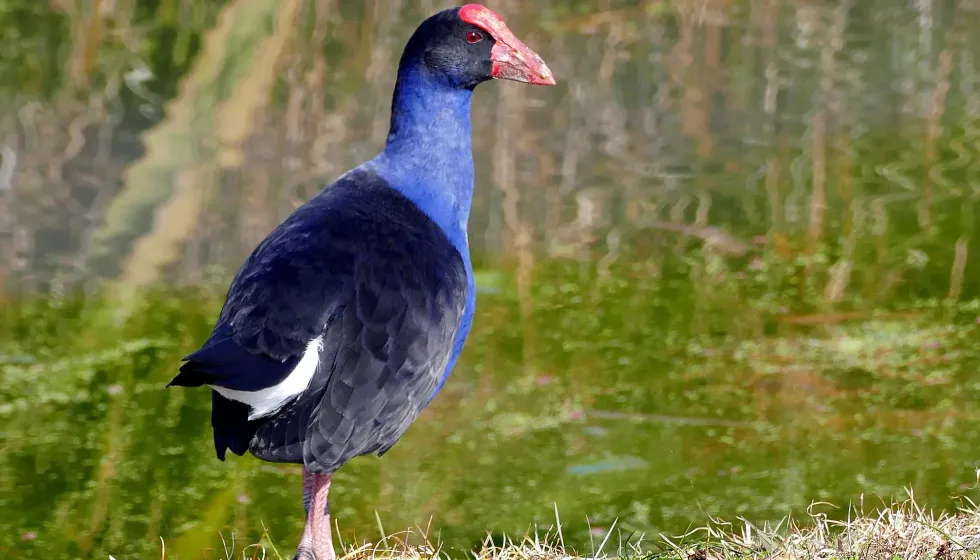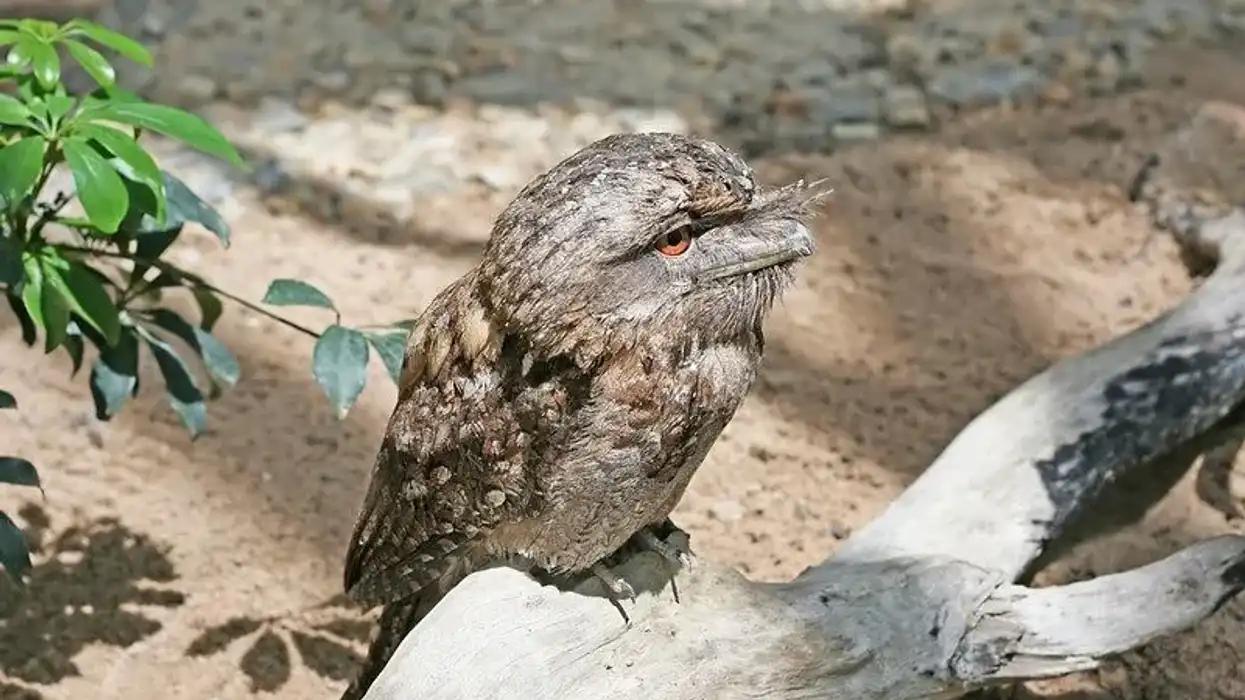The species of swamphen, purple swamphen (Porphyrio), occurring in and near southeastern Asian and Australian countries is known as the Australasian swamphen, Porphyrio melanotus. The purple swamphen (Porphyrio), also known as purple moorhen, purple gallinule, or purple coot, has several subspecies based on variations in distribution.
The purple swamphens classify into western swamphen (Porphyrio porphyrio), African swamphen (Porphyrio madagascariensis), gray-headed swamphen (Porphyrio poliocephalus), black-headed swamphen (Porphyrio indicus), Philippine swamphen (Porphyrio pulverulentus), and Australasian swamphen (Porphyrio melanotus).
The populations of the Australasian swamphen range map highlight mainly the north and east of Australia, New Zealand, islands of Indonesia, and Papua New Guinea. The species of purple swamphen (Porphyrio), the Australasian swamphen, Porphyrio melanotus, is locally called pūkeko. It inhabits swamps, marshes, streams, and islands with plenty of healthy vegetation.
It is also known as sultana bird, with references from its French name, talève sultane. Nonetheless, it is even reputed as an egg stealer as it is quite popular for stealing eggs from nests of other species of birds to feed upon.
If the uniqueness of the Australasian swamphen makes you interested to read more about similar species, you can read about greater sage-grouse and leghorn chicken.
Australasian Swamphen Interesting Facts
What type of animal is an Australasian swamphen?
An Australasian swamphen, Porphyrio melanotus, a rail, is one of the subspecies of purple swamphens. It is also called a pūkeko, having an origin from the Māori language. Its red bill and frontal shield make the Australasian swamphen, of the subfamily purple swamphen (Porphyrio), easily recognizable.
What class of animal does an Australasian swamphen belong to?
The Australasian swamphen, Porphyrio melanotus, belongs to the family Rallidae. More precisely, it is one of the subspecies of purple swamphens. It is a rail waterbird with a significant red bill and forehead shield.
How many Australasian swamphens are there in the world?
No search records show the population of Australasian swamphen, Porphyrio melanotus, in the world. The species of birds are neither listed in the IUCN Red List of Threatened Species nor have a definite conservation rate.
Where does an Australasian swamphen live?
The Australasian swamphen, Porphyrio melanotus, from the family Rallidae, is native to Australia. It mainly lives in the mainlands of Southwest Pacific region. The distribution of birds ranges throughout the east and north of Australia, islands of eastern Indonesia, mainly the Moluccas, Aru, and Kai Islands, New Zealand, and Papua New Guinea.
What is an Australasian swamphen's habitat?
The habitat of the rail species of swamphen, purple swamphen, or purple gallinule, in particular, surrounds freshwater swamps, marshes, and streams comprising healthy vegetation. According to the research, the distribution of the Australasian swamphen, Porphyrio melanotus, is native to the Australian habitat.
Furthermore, the scientific search reports highlight that the gallinule species of bird builds its nest on a platform of reeds surrounded by vegetation, above the surface of the water.
Who do Australasian swamphens live with?
The search highlighted that the Australasian swamphen, Porphyrio melanotus, is rarely caught living a solitary life. The subspecies of purple swamphens, pūkeko, are often recorded in groups that range up to 2-12 individuals.
The group consists of multiple breeding pairs. The offspring hatched from eggs laid by the groups are often groomed and nurtured by the males and females group members altogether.
How long does an Australasian swamphen live?
The research highlights that the lifespan of subspecies from the group of purple swamphens, Australasian swamphen, Porphyrio melanotus, range from 9-22 years in the wild. It is speculated that pūkeko may live even longer. On the other hand, a pink cockatoo lived up to 83 years and is reported to be the longest living bird so far.
How do they reproduce?
The Australian species of purple swamphen, the Australasian swamphen, Porphyrio melanotus, uses varying breeding methodologies. While breeding is monogamous, they also adopt communal mating too.
The breeding group may comprise up to six breeding pairs. The species of purple swamphen attain sexual maturity at the age of three. The female bird also shares its nest with other males and females, and they also nurture and groom the offspring together.
The female birds lay three to six eggs at dawn. The eggs hatch within a range of 23-29 days. The parent birds with their young ones move away from the nest within a day.
Furthermore, the young ones start feeding themselves after two days. Young ones from the earlier mating season are reported to assist the male-female monogamous pair in raising broods.
What is their conservation status?
The Australasian swamphen, Porphyrio melanotus, the species of family purple swamphen lacks a conservation status under the IUCN Red List of Threatened Species.
Australasian Swamphen Fun Facts
What do Australasian swamphens look like?
The Australasian swamphen, Porphyrio melanotus, is a blue-black bird from the subfamily of purple swamphen. The bird has a magnificent red bill and a frontal forehead shield.
It is a chicken-sized bird from the family Rallidae having dark-colored feathers with a shiny indigo iridescence. The tail has a white undertail and the legs are generally long with large feet. The legs, feet, and toes range from yellow, orange, red in color.
*Please note that this is an image of a purple swamphen, not an Australasian swamphen. If you have an image of an Australasian swamphen, please let us know at hello@kidadl.com.

How cute are they?
The Australasian swamphen, Porphyrio melanotus, are unique birds in the world with a red bill and frontal shield. The blue-black plumage with green sheen is sure to attract you. Furthermore, the Australian birds caught in groups that range up to 12 individuals are indeed a pleasant sight to behold, especially when raising their offspring.
How do they communicate?
The Australasian swamphen, Porphyrio melanotus, uses visualization and vocalization to communicate with birds. The calls of Australian purple swamphen penetrate a sound 'kee-ow'. The bird is vocal, with loud calls and squawks. Also, report references highlight that the group of Australian birds shrieks loudly to defend their nests and territories from the bird species of harrier hawks.
How big is an Australasian swamphen?
The Australasian swamphen, Porphyrio melanotus, is 14.9-19.6 in (38-50 cm) long. It is seven times smaller than the longest bird in the world, the ostrich.
How fast can an Australasian swamphen fly?
While the Australasian swamphen, Porphyrio melanotus, prefers to walk rather than fly, the bird is speculated to be a capable flier. The flying speed of the species of purple swamphen remains undeciphered, a peregrine falcon is considered the fastest flying bird in the world.
How much does an Australasian swamphen weigh?
The Australasian swamphen weighs around 29.9-37 oz (850-1050 g). On the other hand, a common ostrich is the heaviest bird recorded in the world with an average weight ranging up to 230 lb (104 kg).
What are the male and female names of the species?
There are no sex-specific names assigned to the species of Australasian swamphen, Porphyrio melanotus. All around the world, a female bird is called a hen, and a male is referred to as a rooster.
What would you call a baby Australasian swamphen?
While a baby Australasian swamphen, Porphyrio melanotus, has no specific name, a baby bird is often called a chick, hatchling, nestling, or fledging all across the world.
What do they eat?
The diet of the species of purple swamphen called pūkeko in New Zealand comprises reeds, rushes, eggs, and small animals such as frogs and snails.
An egg is a primary food of the pūkeko, and it has a bad reputation for being egg stealers as it preys and feeds on eggs laid by different birds around the world, especially, species inhabiting its native habitat.
Its diet also comprises juvenile species of various animals.
Are they poisonous?
Neither the species of Australasian swamphen nor other swamphens around the world are not reported to possess poison.
Would they make a good pet?
The Australian swamphen is a wild aquatic bird and does not make a good pet. There are no reports documented of petting a swamphen throughout the world.
Did you know...
The Australasian swamphen often catches its food from the ground using its long legs rather than the bill.
While the species of purple swamphens are considered threatened around the globe, they lack a categorization under the IUCN Red List of Threatened Species.
The swamphens are not considered Extinct.
While a swamphen prefers to walk, although it can fly. The swamphens are also considered capable fliers.
Why is an Australasian swamphen called pūkeko?
The term pūkeko is derived from the Māori language and is a common name for the Australasian swamphen in New Zealand. It is also known as an Australasian swamphen, purple moorhen, purple gallinule, or purple coot.
Are Australasian swamphens endangered?
There are no confirming reports about the conservation of the Australasian swamphens. While the species is not listed under the IUCN Red List of Threatened Species, the population is speculated to be declining, primarily due to hunting and threats from its predators.
Here at Kidadl, we have carefully created lots of interesting family-friendly animal facts for everyone to discover! Learn more about some other birds from our bobwhite quail facts and mountain chickadee facts for kids.
You can even occupy yourself at home by coloring in one of our free printable Australasian swamphen coloring pages.










